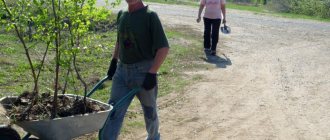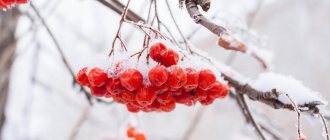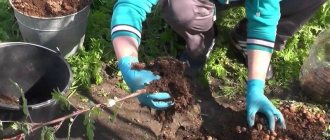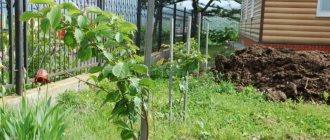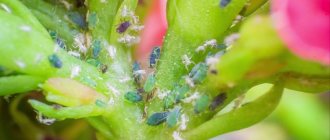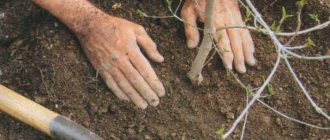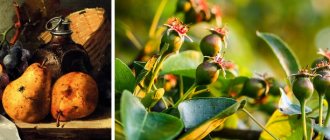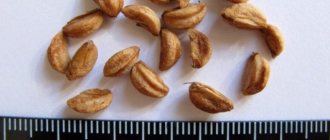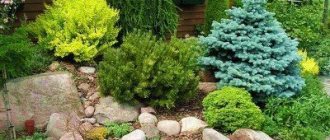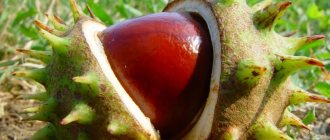What are rowan leaves: complex or simple?
The shape of rowan leaves is varied. When you look at leaves from different trees, you involuntarily ask yourself: “Is a rowan leaf complex or simple?” According to biologists, there are both complex, odd-pinnate, and simple rowan leaves. Actually, the structure of the leaves determines the division of the shrub into two main subgenera.
True rowan trees include trees with feathery leaves that form openwork crowns. Trees of the second subgenus, thanks to simple whole, toothed-lobed and lobed leaves, are distinguished by fairly dense crowns.
The value of real mountain ash is higher. Most of them bear edible medicinal bittersweet berries. Regardless of what a rowan leaf looks like, all types of trees are widely used in landscape design when arranging all kinds of gardening areas. The bushes are excellent as tapeworms; they look great in group arrangements and regular alleys.
Indeed, in decorativeness, the tree successfully competes with competitors (of which, by the way, there are few), taking away the palm from individual plants. It is beautiful in any season. And when the openwork spring foliage sparkles. And when it shines with a white boil of inflorescences. And when the bright fire of foliage, touched by the autumn crimson, burns with fiery red clusters of tart berries, especially dusted with the first snow.
Varieties by fruit
Based on ordinary rowan, botanists have developed several interesting varieties. They differ in trunk height, crown size, and speed of fruit ripening. The following varieties are resistant to frost:
Businka is a low plant with red fruits. The first berries appear 4-5 years after planting; they taste like cranberries. Large scarlet rowan produces fruits faster, but they are tart and slightly bitter. Titan ripens every year, the shrub itself is not tall. The fruits are dark red, covered with a whitish coating.
The dessert variety must be constantly fertilized, otherwise the rowan will be small. The fruits ripen annually; the dark, juicy berries have a tart taste.
Yellow and white berries can grow in gardens. Although these are rare varieties, they have a high yield. The branches are so burdened with fruits that they bend almost to the ground. The berries taste juicy and sweet, suitable for making jam, liqueur and syrup. In addition to its practical value, rowan is used as a bright garden decoration.
Biological description of rowan leaf
In the spring, when the rowan buds are just beginning to bloom, it is difficult to say right away what kind of shrub we have in front of us. A tree whose leaves have completely unfurled is clearly recognizable. After all, everyone is familiar with the original rowan leaf. Whether it was a photo or a drawing, everyone saw it. We admired it more than once in the park, forest or garden.
The common petiole is covered with many large, feathery small leaves. The construction scheme of each is elementary. It is assembled from several pairs of miniature leaves. Its tip is formed by an unpaired separate leaf. Various sources provide a more accurate description of the leaf of the mountain ash - a plant from the Rosaceae family.
The length of the odd-pinnate leaves reaches 10-20 centimeters. The long thin reddish petiole is studded with 7-15 practically sessile broadly lanceolate or elongated, pointed, jagged along the edge, miniature leaves (3-5 cm long), entire at the lower end and sharply serrated at the apex.
Pests and diseases
Plants are resistant to various diseases and pests. If weather conditions are negative:
- high degree of humidity;
- a sharp change in temperature conditions, this will soon lead to the appearance of pests.
Leaf blades can be damaged by sawflies, mites, and caterpillars. Blooming rowan can be a favorite for flower beetles, berries for rowan moths, branches for apple fruit sawflies and bark beetles.
To eliminate all garden pests, rowan trees should be treated with special preparations in several stages. Plants are not treated only at the moment of formation and ripening of fruits.
Rowan foliage in spring and summer
In spring, thick down is clearly visible on the leaves. They are covered with hairs both above and below. By summer, the hairs will fall off, the delicate fluff will disappear, exposing the surface, just as happens in other trees, for example, in aspen. The fluff of hairs prevents the rapid evaporation of the liquid that saturates young, fragile leaf blades.
Summer leaves, usually matte, leathery and rough, colored on top in dull green tones, have a felt gray bottom that glows with pale bluish shades, almost close to a white-silver color.
Crown condition
Biologists note that rowan can have different leaves - complex and simple. The type of plant depends on their structure:
The common rowan has pinnate leaves that form an openwork crown. In entire leaves, the shape can be lobed, serrated or simple. True shrubs are valued more highly because they produce edible, bittersweet fruits. Regardless of the shape of the leaves, the wood is used to make furniture, and the plant itself is used to decorate a garden or park. Low-growing shrubs look good individually or in group arrangements and alleys.
In spring, the buds are just beginning to bloom, and the leaves are completely unfolding. They are used to determine the variety of rowan. Several large feathery elements appear on one cutting at once; at the top there is the smallest unpaired process. The length of unpaired compound leaves reaches 12 cm, their edges are jagged, and their tips are sharp. The end of the thin stalk is studded with small elements with a solid lower part.
At the end of spring, noticeable fluff appears on the branches, which covers both sides of the leaves. By summer it disappears, only the strengthened flexible elements remain. Hairs are necessary to ensure that moisture in the plant is retained longer. In June-July, the upper side of the leaf becomes dull green, dull and rough. The lower one is covered with a silvery-white coating and feels like felt.
In late autumn, the color of rowan leaves changes three times. In September they turn bright yellow, gradually changing shade to a muted orange. At the end of October, the palette turns crimson and scarlet.
Rowan leaves in autumn
Green in summer, rowan leaves go through three stages of coloring in autumn. Yellow at first, they gradually acquire shades of orange (from light to intense). And in the end they are painted in a crimson color palette. The autumn crown of the plant glows with golden, orange and terracotta tones.
The foliage, which has outlived its usefulness, begins to fall. But rowan does not lose entire leaves (unlike many other trees and shrubs). The constituent parts fall off one by one from the pinnate leaf. It, losing miniature leaves one after another, seems to fall apart into separate parts.
The petiole of a huge leaf is gradually becoming exposed. And only when completely exposed does the main brick-red vein part with the plant, flying away from it last.
Rowan - description. Characteristics of rowan
To begin with, it’s worth simply describing the rowan, and also answering a very common question that relates to this plant. Many users on the network ask the question “Is rowan a shrub or a tree?” If you think about it, this question is very logical, if you look closely at the mountain ash, you really won’t immediately understand whether it is a bush or a tree, its structure matches both characteristics, so it can be either a bush or a tree.
Finding the answer to this question is quite easy. You just need to enter “Rowan ash” into the search engine, and all the information about it will be posted in the first paragraph of the article on this comprehensive resource. The fact is that this plant itself is a tree, but at the same time there are also shrub varieties . The tree family is Rosaceae, the root system is well developed, reaches 2 meters in depth and spreads to 5 meters in diameter, the type of fruit is spherical, the height of the tree usually reaches 6-15 meters. Rowan looks like a not very tall tree with a straight trunk, as well as a crown, the shape of which can be described as ovoid.
Rowan trees are distinguished by their smooth bark and grayish color . Leaves can be of different shapes : oblong-lacental or simply oblong, alternate, also called imparipinnate. This plant is indeed a very beautiful tree, which determines its popularity as an ornamental plant. The old leaves of this shrub are not pubescent, unlike the young ones.
Rowan is especially beautiful during its flowering period, when it begins to bloom, and also looks very pretty in the fall. The flowers are collected in a kind of panicle and can be white or have a pinkish tint. The smell of rowan flowers, however, is not particularly pleasant. This plant bears fruit annually , but one should not naively believe that the “harvest” can be collected within the specified time frame. Approximately once every three years the plant produces a full “harvest”.
The rowan tree usually blooms in late spring or early summer. In this case, fruit development begins in the fall in September. Gradually, they turn from white berries into red or black fruits. Of course, the berries of the rowan tree may not be on a par with the berries of cherries or grapes when comparing their taste, but in terms of usefulness they can easily compete with them.
- It is worth saying a few words about the seeds of the rowan tree. They have a reddish tint and a crescent shape. The rowan tree begins to bear fruit quite late - only in the fifth or seventh year after planting. You should not expect abundant harvests from a relatively young tree. Most fruits can be collected from a tree that is at least thirty years old. From one old rowan tree you can collect about a hundred berries a year.
Foliage of unusual rowan trees
When they talk about the grace of a tree, the charm of its clusters and the extraordinary openwork of its crowns, they usually mean the common rowan. However, the world is replete with other luxurious types of mountain ash, although they are much less common.
Species of whole-leaved mountain ash have unique biological characteristics that make their decorative properties very attractive. The beauty of their solid, often pubescent leaves deserves special attention.
Read also How to grow eggplants in the country
Interesting facts about rowan
The decorative and medicinal properties of rowan, which have already been discussed in this article, are not the only advantages of this beautiful plant. The qualities and properties of the wood of this tree make it possible to make various joinery products from it. Here it is necessary to mention the main advantages of rowan wood - strength and elasticity.
As already mentioned, there are quite a few different varieties of this plant, but one of them can boast of quite large fruits. The berries of large-fruited rowan are really large compared to the fruits of other varieties of this plant. One berry can weigh twenty grams and have a diameter of three and a half centimeters. The fruits of large-fruited rowan are very tasty. At the same time, this variety is not as unpretentious as other types of mountain ash. She doesn't really like winter, so she needs special care. An interesting fact about large-fruited rowan is that it was bred in Crimea by the Crimean Tatars.
Rowan with sweet fruits instead of bitter ones was first found in the village of Nevezhino, Vladimir region. From there it spread throughout Russia. It was this variety with sweet fruits, called nevezhensky, that at the beginning of the twentieth century was used for the mass production of tincture, which was called “Nezhinskaya”.
There are no similar posts
Rowan Aria
An unusual whole-leaved tree dotted Western European sparse forests. It, rising 10-12 m high, spreads its luxurious crown 6-8 m wide.
The shape of the Aria rowan leaf is similar to those sprinkled on alder branches. It is solid, rounded-elliptical, leathery, with a pointed or blunt tip, sharply double-serrated at the edges, reaches a size of 14 x 9 cm. Its top is juicy green in the summer, and the bottom is white-felt, grayish, as if powdered with flour.
Therefore, in Russian it is called mealy rowan. The tree, glittering with silver foliage, shimmering in the breeze, contrasts effectively against the motley background formed by the surrounding plants.
I wonder then, what color rowan leaves are in the fall? Aria's autumn foliage is colored in a special way. With the onset of autumn, its immense crown shines with chic bronze shades.
Rowan care
There is nothing unusual about growing rowan. For normal growth and development of the plant, it must be watered, weeded, loosened the soil surface, pruned, fed and treated to combat pests and diseases in a timely manner.
Such a tree only needs watering during prolonged drought. It should be taken into account that the plant needs mandatory watering at the very beginning of the growing season and after planting in open soil, and another 15–20 days before the harvest is harvested, and 2–3 weeks after that. It is recommended to make grooves around the perimeter of the tree trunk circle into which water flows during watering. For one watering, 20 to 30 liters of water are taken per tree, while the final volume of liquid used depends on the condition and composition of the soil, as well as on the age of the viburnum itself.
The surface of the tree trunk circle needs to be loosened at the beginning of the spring period, during the summer this procedure is carried out 2 to 3 times. And the surface of the tree trunk circle must be loosened after the entire crop has been harvested. The easiest way to loosen the soil is the day after rain or watering. During loosening, you need to pull out all the weeds. When the tree trunk circle is loosened, its surface must be covered again with a layer of mulch.
In order for rowan to be more productive, it will need systemic feeding. Starting from the third year of growth, humus or compost - from 5 to 8 kilograms and ammonium nitrate - 50 grams are added to the soil under the plant. At the beginning of June, 1 bucket of bird droppings solution (1:10) or mullein (1:5) should be poured under the tree. Instead of organic fertilizer, you can use Agrolife solution. In the last summer weeks, 100 grams of superphosphate and 500 milligrams of wood ash must be added to the tree trunk circle.
Pruning is carried out at the very beginning of the spring period before the buds awaken. It is necessary to cut out all dried, diseased shoots growing inside the crown, as well as those that extend at a right angle. Those varieties that bear fruit on last year's stems will need thinning and slight shortening of the branches. If fruiting is observed on various types of fruit formations, then such trees will need periodic thinning and rejuvenation of the ringlets, as well as shortening of the skeletal branches.
The most important goal of pruning rowan is to provide better and more uniform illumination of its crown; this has an extremely positive effect on the yield of the plant. Due to the fact that such a tree has a pyramidal crown shape, the branches grow at an acute angle to the trunk, which makes them more fragile. When forming skeletal branches, you must try to ensure that they are drawn at an obtuse or right angle.
If the plant shows weak growth, it will need anti-aging pruning. It is done on two- or three-year-old wood, as a result of which the growth of new shoots is activated.
Intermediate rowan
This species, often called Swedish rowan, is represented by single slender trees 10-15 meters high, growing wild in Central European, Baltic and Scandinavian forests. A single leaf of rowan, the photo of which was photographed by professionals and amateurs, is very thin.
On top in summer it is dark green, below it is covered with gray hairs, in autumn it has reddish tints. The shape of the shallow-lobed, on average twelve-centimeter whole leaves is oblong-ovate. Decorative silver foliage forms an original oval crown around a smooth grayish trunk.
Some varieties
We list the main varieties that can be found around the world:
- Red maple is a tree 10-20 meters high, 4-7 meters wide. The crown of a fast-growing maple is large and compact, and the bark is flaky and dark gray. The five-lobed leaves have a beautiful bronze color when they bloom; in the summer they turn green, and in the fall they become amazingly decorative: red-purple or orange on the upper side, pinkish-silver on the lower side. And the fragrant flowers of this species have a red tint, and they bloom even before the leaves. Under natural conditions, this maple is found in North America (eastern regions) in wetlands.
- Fan maple (palm-shaped) is a slow-growing shrub (height - 4-6 meters) with an umbrella-shaped rounded crown. With age, the plant grows in width. Young shoots are green or purple. The leaves are palmately lobed, graceful, and over time acquire a bright red hue. Autumn maple leaves are very beautiful - purple. Found naturally in Korea, Japan, central and eastern China.
- Manchurian maple is a beautiful slender tree up to 20 meters high, with a rounded, high-lying openwork crown. Its bark is light gray with small cracks. The graceful, compound, trifoliate leaves are reddish-orange in spring, dark green in summer, and purplish-red in fall. Manchurian maple grows naturally in Korea, Primorsky Krai and China (northeast).
- Greenbark maple is a tree or very large shrub up to 15 meters high with a wide spherical crown. This species is distinguished by its decorative bark. In young plants it is green, but in old trees it is gray. The autumn maple leaf is golden yellow. In nature, it is found in mixed forests with moist soil in Korea, Primorsky Krai and northeast China.
- Ashleaf maple (or American) is an asymmetrical tree, notable for its rapid growth. Height - 10-15 meters, crown width - 5-10 meters. Green leaves turn yellowish-green in autumn. The shoots are green, with a waxy coating of a bluish tint. Found naturally in central North America.
- Bearded maple is a relatively small tree or shrub (4 to 10 meters in height) with a spreading crown. The five-lobed leaves are slightly pubescent on top. Their length can reach 10 cm. The autumn maple leaf has a yellow-orange tint. It grows under natural conditions in North Korea, the Primorsky Territory and the northeastern part of China.
Rowan elderberry
Shrubs and independent thickets of elderberry rowan scattered throughout the undergrowth have settled in the vast expanses of the Khabarovsk Territory, Kamchatka and Sakhalin. They captured the Okhotsk coast, the Kuril Islands and penetrated Japan. Shrub trees are distinguished by their relatively low height (up to two and a half meters), straight, bare dark-brown shoots with a bluish coating, and a rounded-ovoid sparse crown.
On gray branches with clearly defined lenticels, odd-pinnate 18-centimeter leaves were concentrated. The terracotta-colored petioles are studded with oval-lanceolate, sharply serrated leaves, almost naked, glossy dark green. Their number varies from 7 to 15.
What a rowan leaf looks like in autumn photo
Nov 15 • Uncategorized • 42 Views • Comments on the post What a rowan leaf looks like in autumn no photo
Contents
Admiring the curly crown of the beautiful mountain ash, many do not even suspect that in nature there are 84 species of this plant, supplemented by a considerable number of hybrid forms. Rowan has settled throughout the Northern Hemisphere, mastering its temperate zone. There are 34 species growing in the Russian expanses, some of which have been cultivated and used as ornamental shrubs.
The species differ significantly from each other. The color of the berries and bark, rowan leaf and other characteristics are different for each variety. There are very few real mountain ash trees in forests; they are rare. Basically, people are pleased with the unique beauty of rowan undergrowth - miniature deciduous trees 3-6 meters high. The most common and famous type of shrub tree is the mountain ash.
Rowan Köhne and Vilmorena
These original straight-trunked trees are representatives of the Chinese flora. For their habitat, they chose forests covering temperate and warm zones in Central China. Vilmorena differs from Koehne by its greater height (the first is up to 6 m, the second - up to 3 m) and the decorativeness of the crown.
The crowns of plants are strewn with odd-pinnate leaves. 12-25 leaves fit on 20-centimeter petioles, the edges of which are sharply serrated from tip to base. The seasonal rhythm of these plants is very close. The autumn leaf of rowan is painted in purple, red-violet colors.
Rules of care
Caring for trees is similar to caring for other plants. The ground around the trees should be loosened and weeds removed in a timely manner. The area around the tree is carefully dug up, which should be done to protect the root system from possible damage. Young shoots are removed in a timely manner.
Rowan trees, especially young ones, love water, so they are watered in a timely manner. This ensures better growth of ovaries and shoots.
Fertilizers should be applied in spring and autumn. In the spring, a compost mixture with a high nitrogen content should be added to the soil, and phosphorus and potassium should be added to the soil in the fall. If seedlings are fed in this way, they develop better.
To improve the skeleton and its strength, excess branches are cut off. Pruning the branches is also necessary to ensure even exposure of sunlight to the entire seedling. This helps the rowan fruits become larger and richer, providing a unique and original taste.
Rowan berries should be pruned in March. This must be done before the kidneys awaken from sleep. In young trees, the branches should be slightly shortened and excess shoots should be removed. Rowan berries that bear fruit are thinned and the branches are made shorter.
Rowan foliage Glogovina
Medicinal bereka (the second name of the plant) can be found in the Caucasus and Crimea. It captured part of the Ukrainian lands, those that stretched across the southwest of the country. Its natural range extends across Western Europe and Asia Minor. Every now and then you come across single trees and compact groups in undergrowth and bush thickets, in the second tier of forests and on sunny slopes.
Slender 25-meter rowan trees are covered with rounded crowns. The offspring shimmer with olive shades. Relict trees are dark gray, furrowed with cracks. Having a long (up to 17 centimeters) blade, the rowan leaf is simple, broadly ovate.
The plate is rounded-heart-shaped at the base, and its tip is pointed. It has fine-toothed edges and is equipped with 3-5 sharp blades. Its top is glossy, dark green, and its bottom is hairy and pubescent. The autumn palette of leaf blades varies from yellow to orange.
There are two varieties of Glogovina: pinnately dissected and with pubescent foliage. Both form magnificent solo, group and alley plantings.
The meaning of rowan in ancient rituals
The importance of mountain ash was noted in ancient times. Cases of using the plant as a decorative ornament and medicine have already been indicated above, but even in pre-Christian Rus', in some regions, people used rowan for certain rituals. For example, there were wedding ceremonies that involved laying rowan leaves on the shoes of the newlyweds, and also placing rowan berries in their pockets.
The specified plant in this case was used as a symbol of protection against the possible machinations of witches and sorcerers. Rowan trees were also planted next to the house for the same purpose. Rowan was also used to drive out spirits that brought various diseases and illnesses to people.
In addition, the value and significance of rowan among the people is emphasized by the existence of various legends that have been passed down from mouth to mouth for more than one generation. For example, you can point out an interesting and original legend that tries to explain the presence of bitterness in the taste of rowan fruits. According to this legend, the rowan tree was created by the devil himself from the tears of Eve when she was expelled from paradise.
It was believed that this served as a kind of symbol of Satan's victory over humanity. But after the Creator discovered the similarity of the leaves of the rowan tree with the cross, he took it from the devil's garden. This could not please the devil, who subsequently set out to destroy his own creation so that it would not go to the Creator and people. But he failed to do this, only as a result of the attempt, the berries of the rowan tree became bitter .
Rowan alder
Primorye, Japan, Korea and China were affected by scattered and clustered trees with narrow pyramidal crowns of alder ash. They scattered throughout the broadleaf and cedar forests. Straight, shiny dark brown trunks, reaching into the sky, reach a height of 18 meters.
The distinctive features of the leaves are simple, broadly oval, sharply jagged shapes, clearly defined venation, and the length of a dense leaf blade not exceeding 10 cm. Their outlines are similar to alder leaves. This is where the name of the tree comes from.
The spring light green leaf of rowan has a slightly bronze tint. The summer leaf has a yellowish lower surface and an intense dark green upper surface. Autumn shines with rich bright orange shades. The tree is especially beautiful at the time of spring flowering and autumn leaf fall.
Photo of autumn rowan leaves for forest inspiration.
The rowan tree burns like a fire in a fading autumn forest. Rowan leaves are no less bright than the berries.
Rowan leaves are so velvety, pleasant to the touch, neat. Some of the brightest leaves in the autumn forest. The autumn leaves of the rowan tree exude warmth, reminiscent of the light of a fire, a summer dawn, or the light in the window of a forest hut.
Rowan leaves. Rowan autumn leaves. Photo of rowan leaves.
We are collecting for you a selection of the best photos of rowan leaves , autumn, the brightest in the forest. Let our selection of autumn rowan leaves inspire you to go into nature, or better yet with children, look for rowan in your forest by the fiery color of the leaves, and enjoy the autumn silence of nature.
Rowan leaves can be dried between the pages of a book; they will retain their color for a long time. Or take good photos of rowan leaves and send them to us
